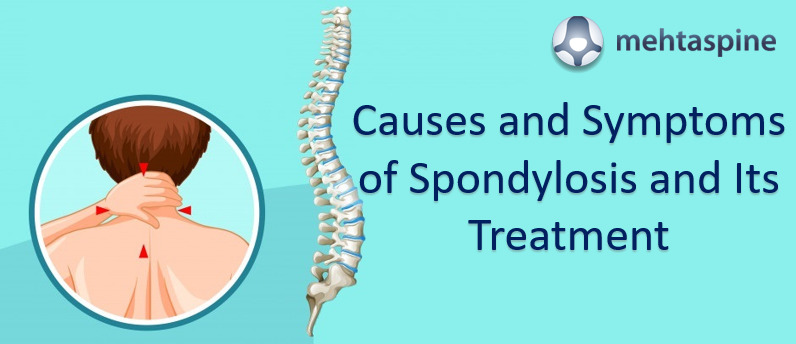Causes and Symptoms of Spondylosis and Its Treatment
The human spine is an intricately built system of bones, joints, spinal discs and ligaments which also bears the brunt of aging. Just like any other body part, the aging can slowly degenerate the spine due to over-use resulting in a wear-out. And Spondylosis is an umbrella term that is used to refer to the aging-related degeneration of the spine.
Spondylosis:
Spondylo is Spine, and Osis is a degenerative condition in Greek making Spondylosis literally mean a degenerative condition of the Spine. As people age, their spinal elements: bones (vertebrae), intervertebral discs, facet joints, cartilage, ligaments can degenerate and change resulting in a spinal condition called Spondylosis. It can occur in your cervical spine (neck), lumbar spine (low back), and also thoracic spine (mid-back).
Symptoms of Spondylosis:
The symptoms depend upon how the Spondylosis interacts with the spinal nerves or spinal cord. Though the Spondylosis is quite common and normal, the pace of degeneration and the onset of symptoms can vary from person to person. While some patients do not experience any symptoms, some do, in the form of back and neck pain. Spinal joint pain, stiffness and sometimes even a deformity are the possible symptoms of Spondylosis. In addition to these symptoms, Spondylosis can lead to other spinal conditions like spinal stenosis which can result in weakness or numbness in arms and muscles, and coordination problems.
Causes of Spondylosis:
As said earlier, Spondylosis is the degenerative spine condition that is a result of wear and tear of the spinal elements due to aging. Even though it may not show up in the form of symptoms, over 85% of older adults above age 65 show signs of this condition on imaging studies. Genetics also play a hand in the onset of Spondylosis. The risk of early-onset increases if the patient’s family has a history of Spondylosis.
As injured spinal elements are more likely to degenerate at a quicker pace, spinal injury is also another important risk factor for Spondylosis.
Diagnosis & Treatment for Spondylosis:
A Spinal Specialist takes a detailed medical history of the patient, conducts a complete physical examination and orders imaging studies. While X-rays are the most common form of imaging studies employed to confirm the Spondylosis, MRI and CT scans are further used to uncover the specifics of the condition.
Physical therapy, low-impact exercise programs, anti-inflammatory medications are recommended by spinal specialists to treat the symptoms of Spondylosis. Surgery is recommended in case the Spondylosis has further resulted in other spinal conditions like spinal stenosis. However, every patient’s condition is different. So it is recommended to contact a specialist spinal surgeon to identify your treatment options to get rid of Spondylosis. If you are looking for Spondylosis treatment in the U.K, you can contact Spondylosis Specialist Mr.Jwalant S.Mehta.


